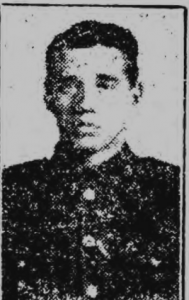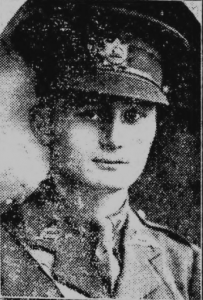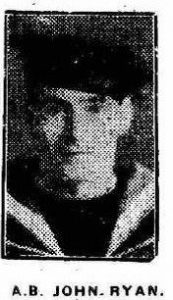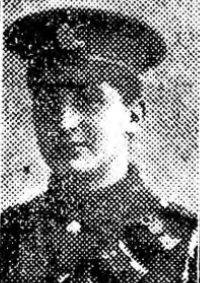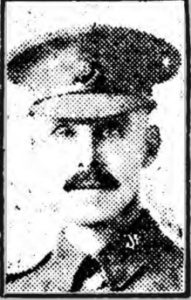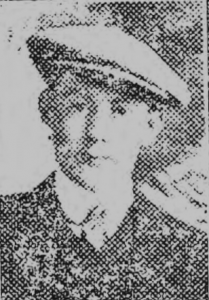| Name | Position | Department | Rank | Regiment | Address | Death | Age |
| Brambles, James | Conductor | Tramways | Pte. | East Lancs 1/5th | 14, Frederick Terrace, Hawthorne Avenue, Hull | 24/08/1918 | 22 |
| Bright, Frederick | Temp. Clerk | Accounts | C.S.M | Durham Light Infantry, 27th | 7. Cave Street | 04/03/1918 | 48 |
| Burton, George | Car Washer | Tramways | Pte. | East Riding RGA | Marshall Street | 01/09/1922 | 49 |
| Campey, Tom | Conductor | Tramways | Pte. | King’s Royal Rifle Corps | 84, Selby Street | 21/04/1915 | 32 |
| Cox, James | Driver | Health Dept. | Pte. | Coldstream Guards 1st | Sculcoates Lane | 23/10/1914 | 32 |
| Daddy, John William | Telephonist | Telephones | Cpl. | 13th EYR | Alaska Street | 13/11/1916 | 31 |
| Dale, Albert | Conductor | Tramways | Pte. | RAMC North Field Ambulance | 30, Sandringham Street | 20/04/1916 | 25 |
| Davie , Frank (MM) | Clerk | Accounts | Lieut. | 11th EYR | 62, Sunny Bank | 02/06/1917 | 27 |
| Donkin, William | Filler | Health | Driver | RFA 153rd Bde. | Westbourne Street | 06/11/1918 | 23 |
| Elston, James Herbert | Stonemason | Engineers | Sgt | 13th EYR | Waterloo Street | 13/11/1916 | 27 |
| French, James Arthur | Labourer | Engineers | Sgt | Coldstream Guards, 1st | Montrose Street | 15/08/1920 | 33 |
| Garniss, Harry | Wireman | Tramway Electrical | Pte. | 1/4th EYR | Nicholson Street | 23/04/1917 | 24 |
| Gould, Wilfred | Labourer | Tramway Electrical | Pte. | Coldstream Guards, 1st | 193, Hawthorne Avenue, Hull | 14/03/1915 | 21 |
| Groves, Ernest | Clerk | Treasurer’s Dept. | Lieut. | 7th EYR | 33, Salisbury Street, Hull | 31/03/1918 | 21 |
| Groves, William | Clerk | Treasurer’s Dept. | Pte. | East Riding Yeomanry 1st | 33, Salisbury Street, Hull | 15/04/1917 | 22 |
| Haldenby, Albert | Conductor | Tramways | Pte. | Coldstream Guards | 1, Brooklyn Ave, Perth Street, Hull | 28/09/1914 | 26 |
| Harper, William Herbert | Tram Driver | Tramways | Pte. | 12th EYR | 4, Beech Grove, Westbourne Street, Hull | 13/11/1916 | 30 |
| Harrison, Amaziah | Beadle | Town Clerks | Sgt | Ox & Bucks Reg | Granville Street, Hull | 20/06/1918 | 48 |
| Henning, Cecil Victor | Clerk | Accounts | Cpl. | King’s Royal Rifle Corps | 5, Pryme Street, Hull | 05/07/1917 | 30 |
| Hepton, Richard Henry | Road sweeper | Health Dept. | Gunner | RFA 2nd Northumbrian | 123, St Paul St | 04/03/1916 | 22 |
| Howard, William Henry | Conductor | Tramways | Sapper | East Riding Engineers | 7, Terry Avenue, Stoneferry, Hull | 17/08/1918 | 32 |
| Johnson, John Wilfred | Motorman | Tramways | Pte. | 3rd EYR | 5, Hardy Street, Hull | 17/10/1918 | 33 |
| Kay, Herbert James | Conductor | Tramways | L/Cpl | Northumberland Fusiliers, 1st | 10, Stable Yard, Salthouse Lane | 20/10/1914 | 21 |
| Larard, Howard Martin | Sworn Weigher | Weights & Measures | Pte. | KOYLI, 9th | 59, Regent Street | 10/10/1917 | 39 |
| Lee, Robert Harold | Signalman | Tramways | Pte. | Lincolnshire Regiment | 23, Zetland Street, Hull | 25/10/1917 | 37 |
| Lockyear, Horace | Clerk | Accounts | Lieut. | 6th Lincolnshire | Clumber Street | 20/05/1918 | 21 |
| Maplethorpe, Harry | Handyman | Tramway Electrical | Pte. | MGC, 57th | Symons Street | 27/11/1918 | 27 |
| McNally, Thomas John | Conductor | Tramways | Pte. | 13th EYR | 13 Ventnor Street, Newland, Avenue, Hull | 13/11/1916 | 22 |
| Monday, Albert | Conductor | Tramways | Private | Royal Marine Light Infantry, “Portsmouth” Battalion, Royal Naval Division | 11, Russell Terrace, Bean Street | 24/06/1915 | 21 |
| Ryan, John | Fireman | Tramway Electrical | Stoker | Royal Naval Reserve | 7, Alberts Terrace, Terry Street, Hull | 09/10/1917 | 22 |
| Smith, Richard William | Brassfinisher Apprentice | Tramway Electrical | Gunner | RFA 2nd Northumbrian | 3, Liverpool Street, Hull | 15/05/1915 | 19 |
| Stamp, Ernest | Conductor | Tramways | Gunner | RFA, 317th | 27, Folkestone Street, Hull | 14/11/1916 | 25 |
| Temple, Alfred | Labourer | Engineers | Gunner | RGA | 3, Reform Street, Hull | 16/05/1919 | 47 |
| Thompson, Percy Lawrence | Motorman | Tramways | Private | WYR, 2nd | 19, Terry Street, Hull | 16/08/1917 | 26 |
| Tindale, Thomas | Driver | Tramways | Pte. | K.O.Y.L.I, 1/4th | 26, Glasgow Street, Hull | 24/07/1917 | 30 |
| Usher, William Ernest | Driver | Tramways | Cpl. | 11th EYR | 60, Folkestone Street, Hull | 12/04/1918 | 35 |
| Warvill, Alfred | Labourer | Engineers | Gunner | RGA | 10, Lily Grove, Subway Street, Hull | 01/07/1915 | 26 |
| Wilkinson, Harry Manley | Sgt. | 1/4th EYR | 94, Plane Street, Hull | 25/03/1918 | 25 | ||
| Worsnop, Edgar | Teacher | Education | Lieut. | West Yorks. Reg. 9th | Armley, Leeds | 07/08/1915 | 26 |
In August 1914, 178 Hull Corporation or Council staff enlisted in the Great War. Many were former soldiers, reservists or members of the Territorial forces. All were Volunteers. One was a widower, 92 of the 178 men were married and had dependent wives and children. There were also many single men, who supported their family, in various ways and in one case, lived at home with two blind parents. To encourage enlistment, the Council offered to make up the wages of staff who enlisted and paid 2 shillings a week for every dependent child. The Corporation also promised servicemen their jobs back when they returned.
The above 40 men were the first Council Staff to enlist and die in the war. There is no Official Memorial or Plaque to them, at the Hull Guildhall, (as there are for Hull Teachers, and Council Staff killed in the Spanish Civil War). However, their stories can be found in the Council War Minutes and Archives at the Hull History Centre. You can also search each name on this website for more information, on what they did and where they lived, etc.
Many more Council Staff enlisted during the course of the war, particularly when compulsory conscription was introduced in 1916. Therefore the list above will be updated, over time.
Not included above are the 27 Hull Teachers, from the Hull Education Department, killed in the 1914-18 war. Their stories are told here https://ww1hull.com/clergymen-2/
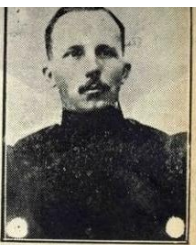
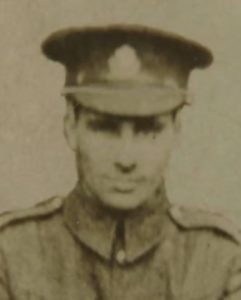
Date of death: 13/11/1916 (aged 31)
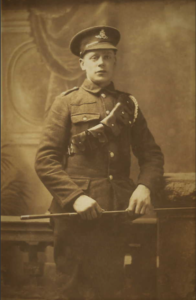
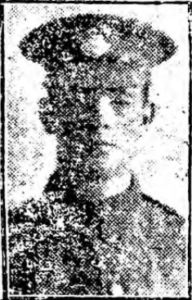
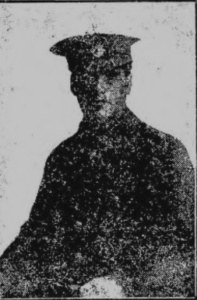
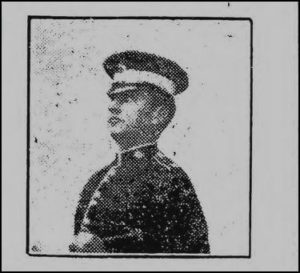
Date of death: 28/09/1914 (aged 25)
